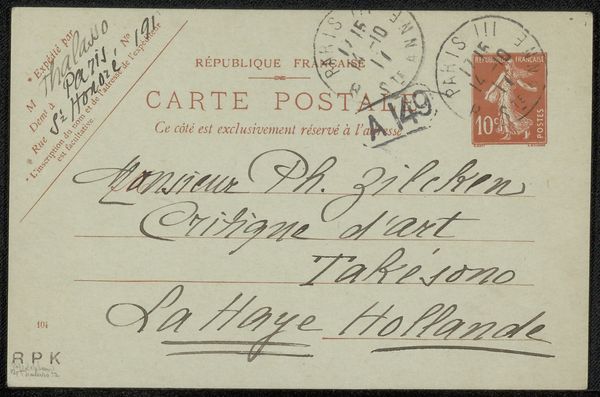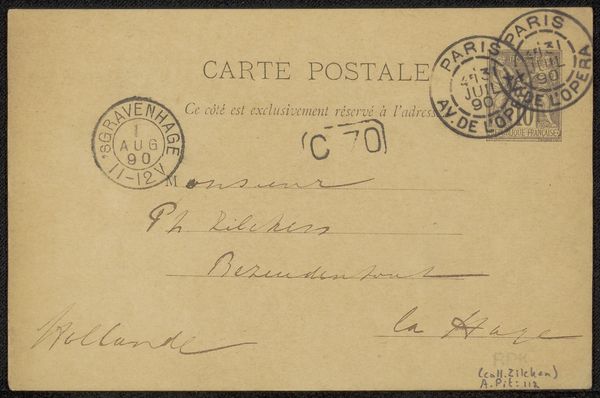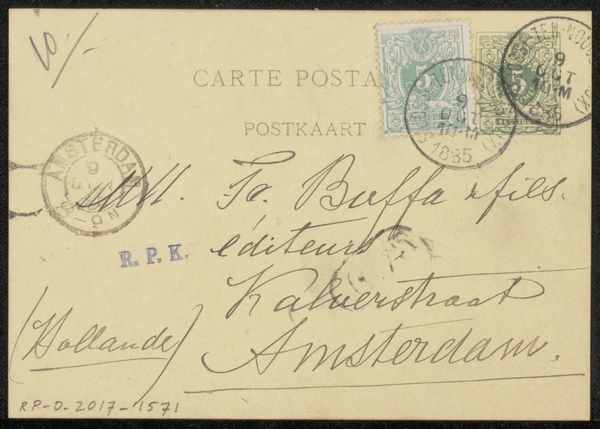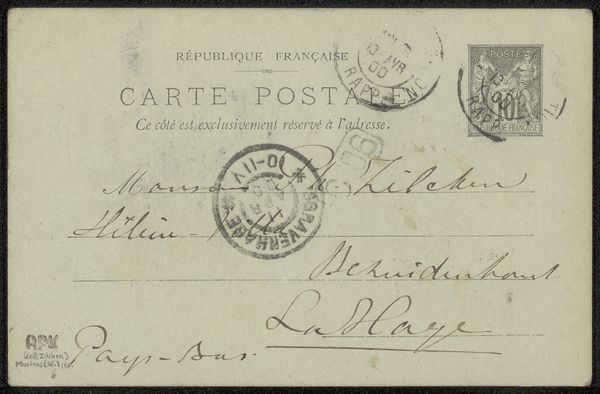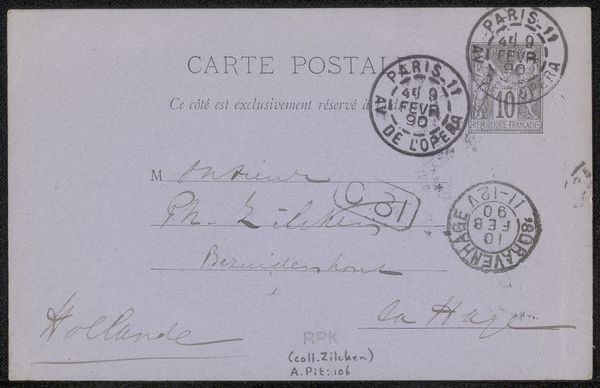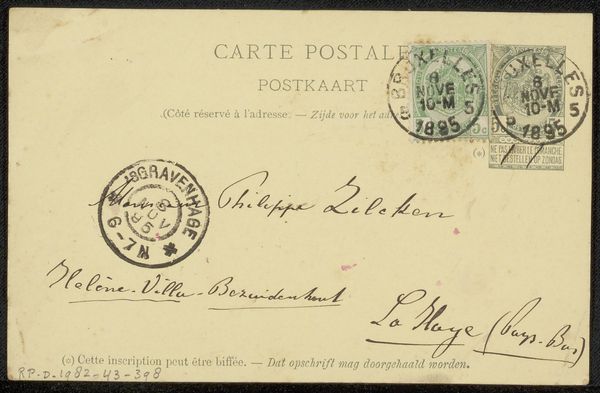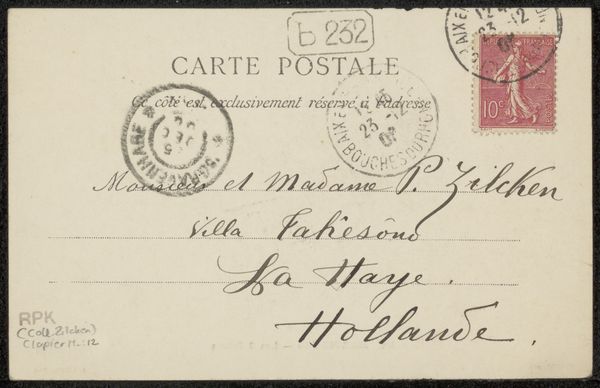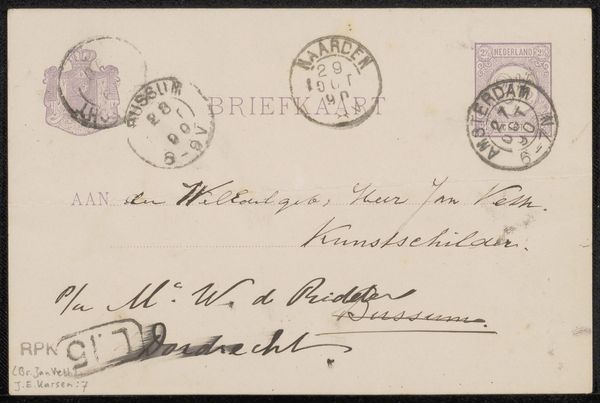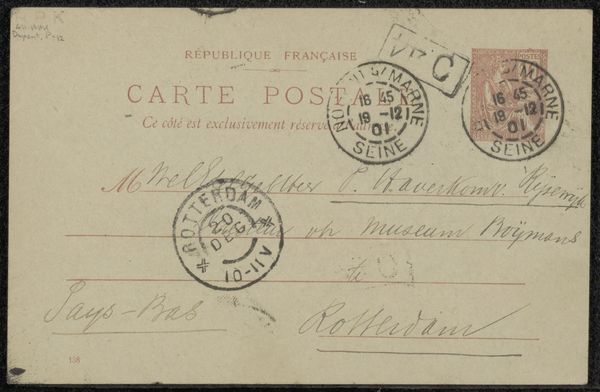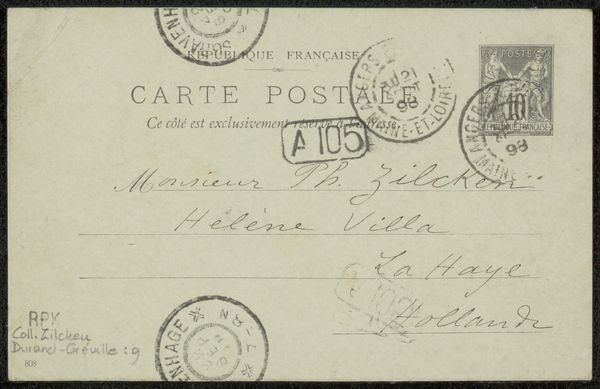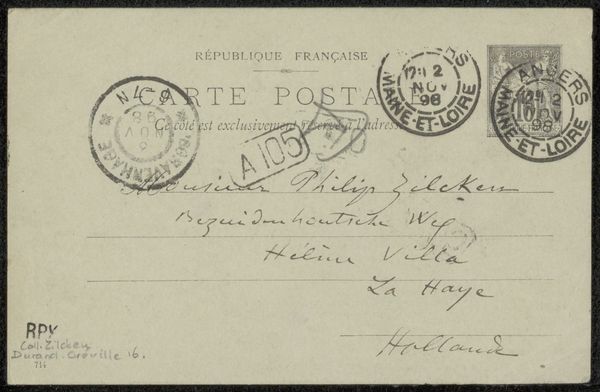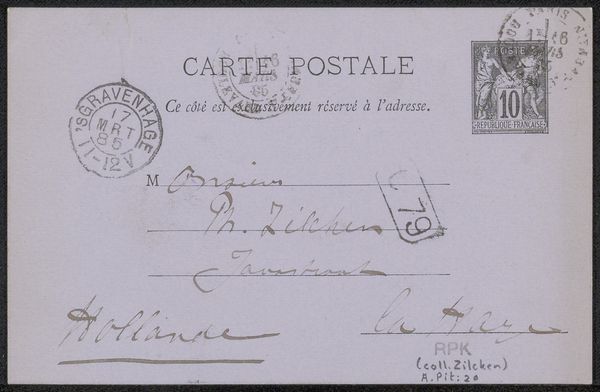
drawing, print, paper, photography, pen
#
drawing
#
comic strip sketch
#
hand-lettering
# print
#
impressionism
#
hand drawn type
#
hand lettering
#
paper
#
photography
#
personal sketchbook
#
idea generation sketch
#
hand drawn
#
sketchbook drawing
#
pen
#
sketchbook art
#
initial sketch
Copyright: Rijks Museum: Open Domain
Editor: Here we have "Briefkaart aan Philip Zilcken," potentially from 1889, housed at the Rijksmuseum. It seems to be a postcard, maybe a pen drawing or print of some sort with hand-lettering. There's a certain intimacy to it, almost like we’re peering into a private conversation. What aspects stand out to you? Curator: The immediate thing that strikes me is its function within the social history of art. It’s not just a drawing; it's a piece of postal communication, a brief message sent between artists or members of the art world. Consider the democratization of art made possible by postcards. Before widespread photography and printing, how did artists connect and disseminate their ideas? Editor: So, the postcard itself is almost as important as the message? Curator: Exactly! It provided a cheap, accessible medium for sharing images and thoughts. We must consider its socio-political context: late 19th-century Europe, experiencing rapid industrialization and the rise of mass media. This postcard facilitated the growth of artistic communities and allowed for broader participation in art culture. The postmarks are integral. Paris and Brussels highlight movement, exchange. How do the stamps, the postal markings, act as traces of its journey? What can we interpret about art world networks via this? Editor: That’s fascinating, viewing the postcard as an artifact of communication. I hadn't considered how essential that might be! Curator: Yes, the medium is the message. And reflecting on it, it adds layers of meaning. Looking at art in this way gives new appreciation, for instance, on a social scale, versus looking for something to fit art historical movements in fine arts. Editor: I’ll definitely look at art differently going forward!
Comments
No comments
Be the first to comment and join the conversation on the ultimate creative platform.

